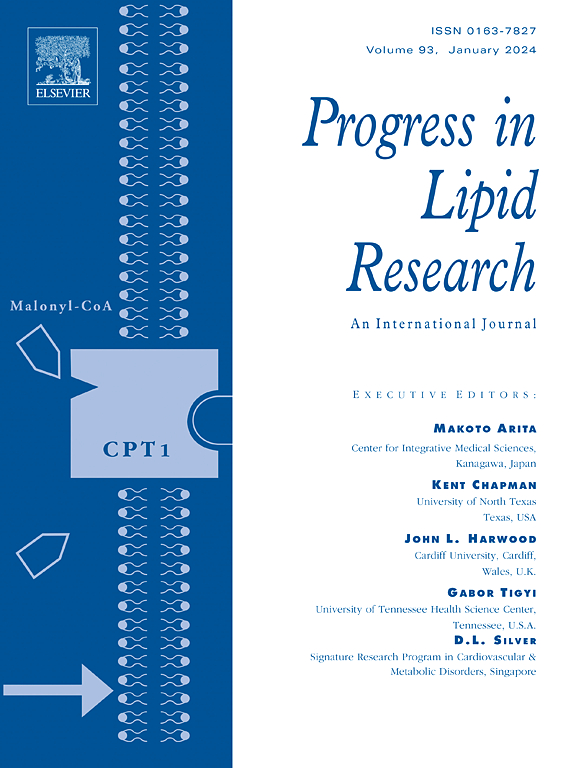Homeocurvature: A new dimension of membrane adaptation to extreme environments
IF 14.9
1区 医学
Q1 BIOCHEMISTRY & MOLECULAR BIOLOGY
引用次数: 0
Abstract
Adaptation to abiotic factors is essential for life's radiation across the planet. Lipids, particularly sensitive to pressure and temperature (P and T), play a critical role in biochemical adaptation. In oceanic depths, lower temperatures and increasing hydrostatic pressure influence lipid packing. The prevailing model for lipid response to P and T has been homeoviscosity, regulating membrane viscosity. However, our recent systematic analysis of lipid adaptation in ctenophores revealed an alternative homeocurvature model influenced by the spontaneous curvature of phospholipids. This model highlights pressure as a stronger modulator of lipid curvature than membrane fluidity, which is particularly relevant in deep-sea environments. This review aims to enhance understanding of lipidome responses by synthesizing the challenges posed by extreme P and T. We explore the interplay between homeocurvature and homeoviscosity, illustrating the unexpected genesis of the homeocurvature model through chemical and biophysical trends. We apply both models to four published lipidomic datasets from diverse marine taxa, proposing that broader environmental sampling is vital for assessing existing models and discovering new ones. Understanding membrane responses to environmental factors informs the function of cell membranes broadly and helps predict the evolutionary and ecological impacts of global change.
均匀曲率:膜适应极端环境的新维度。
适应非生物因素对整个地球的生命辐射至关重要。脂质对压力和温度(P和T)特别敏感,在生化适应中起着关键作用。在海洋深处,较低的温度和不断增加的静水压力会影响脂质堆积。脂质对P和T反应的主流模型是均匀粘度,调节膜粘度。然而,我们最近对丝团脂质适应的系统分析揭示了另一种受磷脂自发曲率影响的均匀曲率模型。该模型强调压力是比膜流动性更强的脂质曲率调节剂,这在深海环境中尤为重要。本综述旨在通过综合极端P和t带来的挑战来增强对脂质组反应的理解。我们探索了均质曲率和均质粘度之间的相互作用,通过化学和生物物理趋势说明了均质曲率模型的意外起源。我们将这两种模型应用于来自不同海洋分类群的四个已发表的脂质组学数据集,提出更广泛的环境采样对于评估现有模型和发现新模型至关重要。了解细胞膜对环境因素的反应可以广泛地了解细胞膜的功能,并有助于预测全球变化对进化和生态的影响。
本文章由计算机程序翻译,如有差异,请以英文原文为准。
求助全文
约1分钟内获得全文
求助全文
来源期刊

Progress in lipid research
生物-生化与分子生物学
CiteScore
24.50
自引率
2.20%
发文量
37
审稿时长
14.6 weeks
期刊介绍:
The significance of lipids as a fundamental category of biological compounds has been widely acknowledged. The utilization of our understanding in the fields of biochemistry, chemistry, and physiology of lipids has continued to grow in biotechnology, the fats and oils industry, and medicine. Moreover, new aspects such as lipid biophysics, particularly related to membranes and lipoproteins, as well as basic research and applications of liposomes, have emerged. To keep up with these advancements, there is a need for a journal that can evaluate recent progress in specific areas and provide a historical perspective on current research. Progress in Lipid Research serves this purpose.
 求助内容:
求助内容: 应助结果提醒方式:
应助结果提醒方式:


